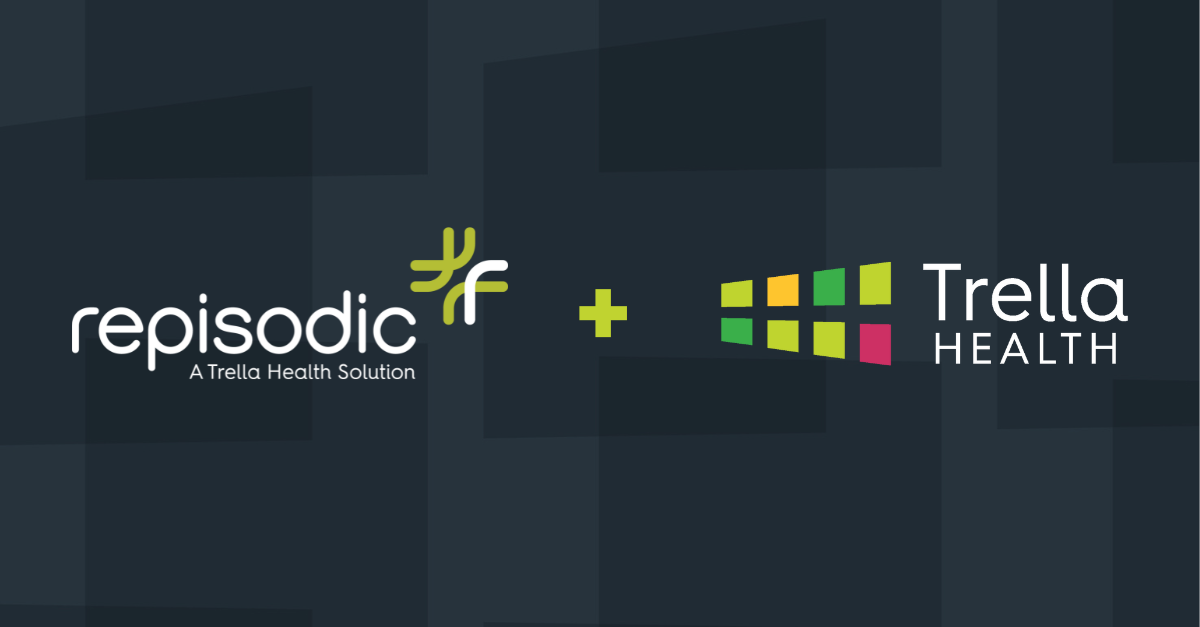Rebecca Molesworth, Vice President, Product Management
With more than 20 years’ experience working with healthcare information technology companies, Rebecca brings a breadth of knowledge and a passion for innovation to Trella Health as the Vice President of Product Management. Before joining Trella Health, Rebecca served as the Senior Director of Data Intelligence for Medecision, accountable for data management, reporting and analytics for the portfolio. Throughout her career, her passion for improving patient outcomes through technology and data has grown. By unifying all stakeholders in the ecosystem, she strives to help patients receive the highest quality and most cost-efficient care. Rebecca graduated from the University of Michigan with an MHSA in Health Management and Policy and has won innovation awards at several of her previous companies. She continued to foster and grow her analytics, data, and interoperability skillsets during the ARRA, HITECH, and PPACA Federal policy implementations. At Trella Health, she’s excited to drive meaningful change and improve transparency in healthcare by creating market-driven solutions.What CMS’ Aug. 3 Deadline Means for Your ACO
By Rebecca Molesworth | August 2, 2021
If your accountable care organization (ACO) is participating in the Centers for Medicaid and Medicare Services (CMS) Medicare Shared Savings Program (MSSP) next year, this week is important for your network. The deadline to respond to Phase 1 first request for information (RFI-1) is August 3, 2021. This means ACOs have until August 3 at 12 p.m. ET to add ACO participants and/or SNF affiliates to their networks for 2022.
Before you submit those additions, it’s important to understand what this deadline means and how it could impact your financial risk in the coming year. First, while August 3 is the last chance to add partners, you will still have the opportunity to remove participants and SNF affiliates between August 25 and September 10 at 12 p.m. ET.
Network modeling and risk mitigation
To be successful under CMS’ new reimbursement models (including MSSP), your network must reduce per member per year (PMPY) costs, while improving patient outcomes. That means partnering with providers and post-acute care organizations that will ensure that patients receive the right care in the right setting at the right time. If you add partners to your network solely based on geographic location, word of mouth, or a prior relationship, you’re likely to significantly increase your financial risk.
With an optimized network, you can ensure that patients are referred to the care settings they need to reduce readmissions, improve outcomes, and decrease healthcare costs. To do that, you need to know where your referring partners excel and which partners are the best choices to refer patients for post-acute care.
Thinking beyond acute care for overall success
To ensure that you’re not taking on more risk than is necessary, you need to think beyond the acute setting. Did you know, for example, that post-acute care accounts for nearly 75% of total Medicare spending in the U.S.? Referring patients to the wrong SNF or home health agency could have a catastrophic impact on healthcare costs and readmit rates.
As you add participants and affiliates to your network to meet the August 3 deadline, consider which potential partners you might be deleting in September – and how you’ll know which cuts to make.
Cutting out SNFs and home health agencies at random could be as disastrous as blindly adding them. To make informed decisions that will reduce your risk and increase your chance of success in shared savings programs, you need a clear view of your post-acute partners’ performance, based on key metrics such as diagnosis and patient acuity.
With access to comprehensive data on key performance metrics, ACOs can optimize their networks to:
- Reduce healthcare costs with risk-adjusted data
- Align internal metrics with the MSSP reimbursement model
- Make data-driven decisions about your PAC partnerships
Want to learn more about how network optimization can help your ACO thrive in 2022? Check out our report, Biggest Opportunity for ACOs: Post-Acute Care Network Optimization.
Trella Health is the leader in market intelligence for the 65+ population, with extensive data sets including Medicare FFS, Medicare Advantage, commercial payers, ACOs, and DCEs. To learn more about how data insights and analytics for key metrics can help your organization control costs, improve patient outcomes, and build a stronger referral network, schedule a demo today.
If your accountable care
If your accountable care organization (ACO) is participating in the Centers for Medicaid and Medicare Services (CMS) Medicare Shared Savings Program (MSSP) next year, this week is important for your network. The deadline to respond to Phase 1 first request for information (RFI-1) is August 3, 2021. This means ACOs have until August 3 at 12 p.m. ET to add ACO participants and/or SNF affiliates to their networks for 2022.
Before you submit those additions, it’s important to understand what this deadline means and how it could impact your financial risk in the coming year. First, while August 3 is the last chance to add partners, you will still have the opportunity to remove participants and SNF affiliates between August 25 and September 10 at 12 p.m. ET.
Network modeling and risk mitigation
To be successful under CMS’ new reimbursement models (including MSSP), your network must reduce per member per year (PMPY) costs, while improving patient outcomes. That means partnering with providers and post-acute care organizations that will ensure that patients receive the right care in the right setting at the right time. If you add partners to your network solely based on geographic location, word of mouth, or a prior relationship, you’re likely to significantly increase your financial risk.
With an optimized network, you can ensure that patients are referred to the care settings they need to reduce readmissions, improve outcomes, and decrease healthcare costs. To do that, you need to know where your referring partners excel and which partners are the best choices to refer patients for post-acute care.
Thinking beyond acute care for overall success
To ensure that you’re not taking on more risk than is necessary, you need to think beyond the acute setting. Did you know, for example, that post-acute care accounts for nearly 75% of total Medicare spending in the U.S.? Referring patients to the wrong SNF or home health agency could have a catastrophic impact on healthcare costs and readmit rates.
As you add participants and affiliates to your network to meet the August 3 deadline, consider which potential partners you might be deleting in September – and how you’ll know which cuts to make.
Cutting out SNFs and home health agencies at random could be as disastrous as blindly adding them. To make informed decisions that will reduce your risk and increase your chance of success in shared savings programs, you need a clear view of your post-acute partners’ performance, based on key metrics such as diagnosis and patient acuity.
With access to comprehensive data on key performance metrics, ACOs can optimize their networks to:
- Reduce healthcare costs with risk-adjusted data
- Align internal metrics with the MSSP reimbursement model
- Make data-driven decisions about your PAC partnerships
Want to learn more about how network optimization can help your ACO thrive in 2022? Check out our report, Biggest Opportunity for ACOs: Post-Acute Care Network Optimization.
Trella Health is the leader in market intelligence for the 65+ population, with extensive data sets including Medicare FFS, Medicare Advantage, commercial payers, ACOs, and DCEs. To learn more about how data insights and analytics for key metrics can help your organization control costs, improve patient outcomes, and build a stronger referral network, schedule a demo today.
organization (ACO) is participating in the Centers for Medicaid and Medicare Services (CMS) Medicare Shared Savings Program (MSSP) next year, this week is important for your network. The deadline to respond to Phase 1 first request for information (RFI-1) is August 3, 2021. This means ACOs have until August 3 at 12 p.m. ET to add ACO participants and/or SNF affiliates to their networks for 2022.
Before you submit those additions, it’s important to understand what this deadline means and how it could impact your financial risk in the coming year. First, while August 3 is the last chance to add partners, you will still have the opportunity to remove participants and SNF affiliates between August 25 and September 10 at 12 p.m. ET.
Network modeling and risk mitigation
To be successful under CMS’ new reimbursement models (including MSSP), your network must reduce per member per year (PMPY) costs, while improving patient outcomes. That means partnering with providers and post-acute care organizations that will ensure that patients receive the right care in the right setting at the right time. If you add partners to your network solely based on geographic location, word of mouth, or a prior relationship, you’re likely to significantly increase your financial risk.
With an optimized network, you can ensure that patients are referred to the care settings they need to reduce readmissions, improve outcomes, and decrease healthcare costs. To do that, you need to know where your referring partners excel and which partners are the best choices to refer patients for post-acute care.
Thinking beyond acute care for overall success
To ensure that you’re not taking on more risk than is necessary, you need to think beyond the acute setting. Did you know, for example, that post-acute care accounts for nearly 75% of total Medicare spending in the U.S.? Referring patients to the wrong SNF or home health agency could have a catastrophic impact on healthcare costs and readmit rates.
As you add participants and affiliates to your network to meet the August 3 deadline, consider which potential partners you might be deleting in September – and how you’ll know which cuts to make.
Cutting out SNFs and home health agencies at random could be as disastrous as blindly adding them. To make informed decisions that will reduce your risk and increase your chance of success in shared savings programs, you need a clear view of your post-acute partners’ performance, based on key metrics such as diagnosis and patient acuity.
With access to comprehensive data on key performance metrics, ACOs can optimize their networks to:
- Reduce healthcare costs with risk-adjusted data
- Align internal metrics with the MSSP reimbursement model
- Make data-driven decisions about your PAC partnerships
Want to learn more about how network optimization can help your ACO thrive in 2022? Check out our report, Biggest Opportunity for ACOs: Post-Acute Care Network Optimization.
Trella Health is the leader in market intelligence for the 65+ population, with extensive data sets including Medicare FFS, Medicare Advantage, commercial payers, ACOs, and DCEs. To learn more about how data insights and analytics for key metrics can help your organization control costs, improve patient outcomes, and build a stronger referral network, schedule a demo today.















